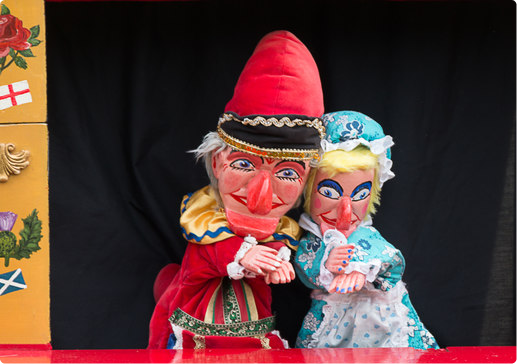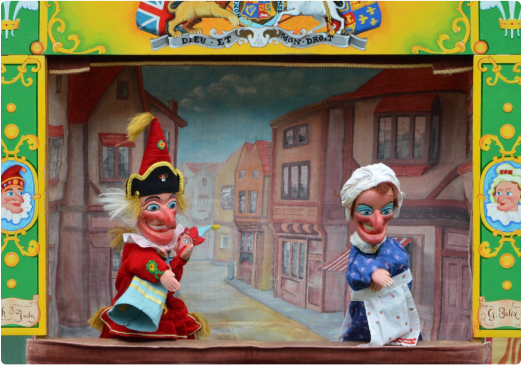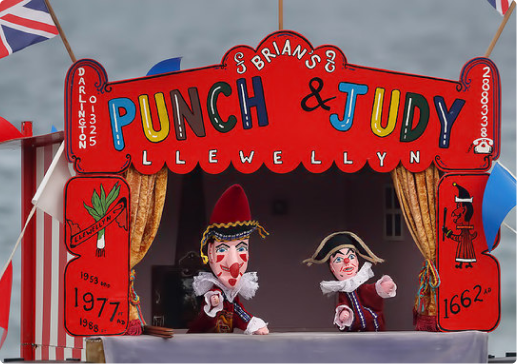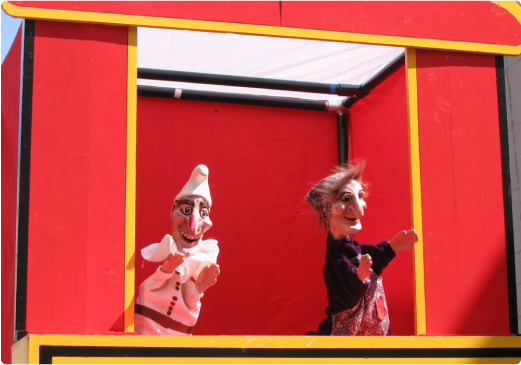
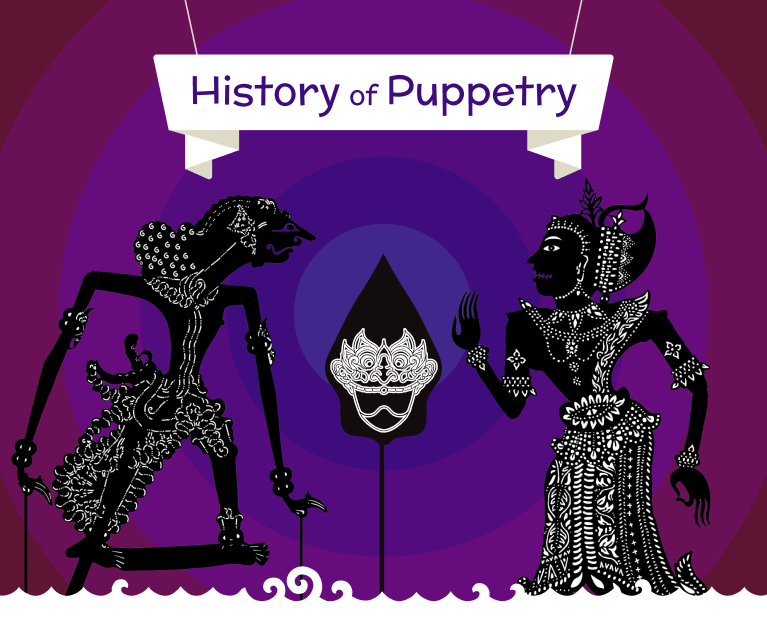
Puppetry is an ancient form of artistic
expression that is a variation on storytelling or
human theatrical productions.
In puppetry, a drama unfolds that is entirely or primarily acted out by specialized representational objects, which are manipulated by a puppeteer. The human animator may or may not be visible to the audience. Cultural variations of puppetry developed independently in many parts of the world, with distinctive types still carried on today in Japan, China, Germany, Indonesia, and the United States, among other places. Throughout the history of puppetry, some specific puppets became international icons in the age of television, including Howdy Doody, Lamp Chop, and Jim Henson’s Muppets.



The rise and use
of different types
of puppetry
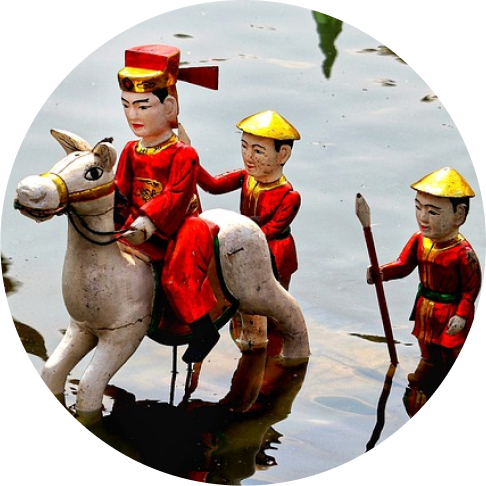
Human-arm Puppets
Human-arm puppets or two-person puppets are large puppets controlled by two puppeteers – one for the head and mouth, another for the arms.

Marotte
A marotte is a simple puppet featuring only a head or body placed on a stick, with some examples featuring one moving arm or a mouth that can open. This feature enables dialogue to be presented realistically as being spoken by the character. It also avoids the puppeteer having to make additional movements to highlight speech.
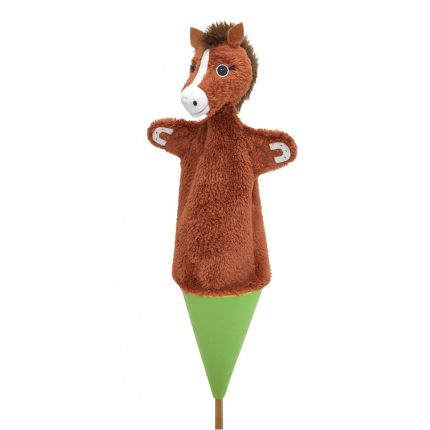
Marionette
A marionette is a puppet controlled from above, using strings.
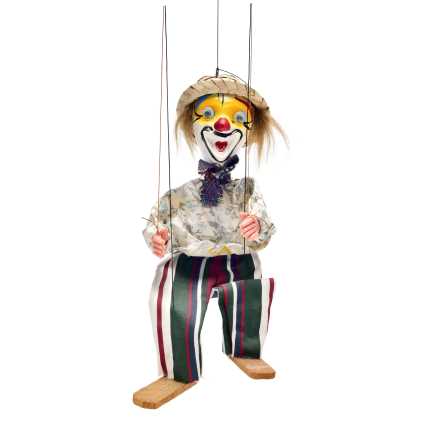
Body puppets
Body puppets, also known as carnival puppets, are gigantic puppets used for street spectacles or large-scale theater, such as the live production of “The Lion King.”
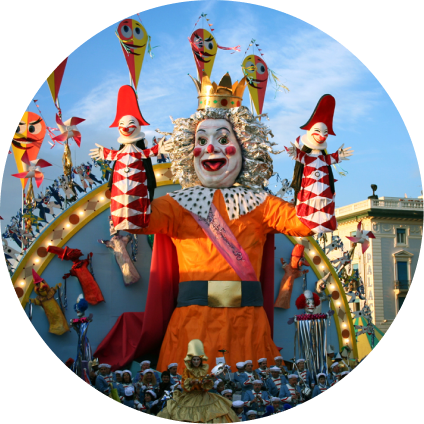
Bunraku puppetry
Bunraku puppetry is performed with a nearly life-sized wooden puppet illuminated with focused light. The puppeteers dress in dark colors but can be indistinctly seen by the audience, lending a shadowy presence to the production.
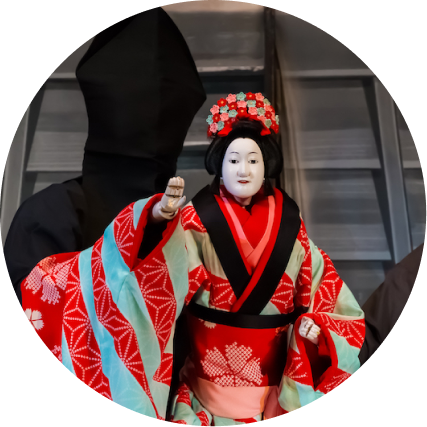
Shadow puppetry
In shadow puppetry, the puppeteer is not seen. Instead, a silhouetted figure is illuminated with a light source, producing shadows that the audience can see and from which they follow a performance and story.
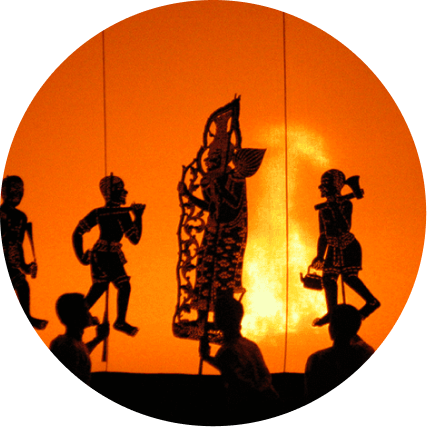
Exploring the
history of
puppetry
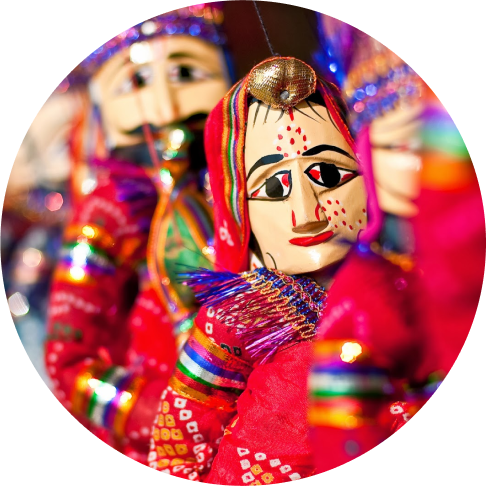

The first known use of puppetry came in
Ancient Greece, sometime around the 5th
century BC.
However, it is possible puppetry was also emerging in other civilizations at around the same time. Some historians believe puppets pre-date actors in a theatrical sense, although there is little direct evidence for this.
In much the same way that theatrical shows and plays developed, puppetry started life in rituals and carnivals before becoming an integral part of shows and performances provided explicitly for entertainment purposes.

It also helped to establish theater as a critical cultural cornerstone of society and life overall.
One of the most notable aspects of the history of puppetry is how it developed across the world and how this development feeds into the role puppetry plays in contemporary theater and society.
The history of puppetry in Africa
While the earliest recorded use of puppetry was in Ancient Greece, the discovery of ivory and clay puppets in Ancient Egyptian tombs suggests that they may have originated here before being adopted by the developing Greek civilization.

Hieroglyphs have also been discovered describing the use of “walking statues” in early Ancient Egyptian dramas.
In terms of puppetry’s development across Africa as a whole, most early influences likely stemmed from Ancient Egypt, spreading across the Sahara before reaching the continent’s central and southern countries. Unfortunately, there is little documentation or knowledge of how puppetry developed throughout Africa throughout the last 2,000 years.
However, it’s clear that puppetry remains hugely influential today. As well as playing a prominent role in African theater shows, puppetry is used across African nations as a ceremonial tool, often in conjunction with people wearing masks.
The history of puppetry in Asia
Such is the rich history and culture found across Asia that it’s unsurprising to learn that puppetry evolved differently across such a vast continent.
It is believed the traditions of Chinese shadow theater stretch back at least 3,000 years. In China, early puppetry was often exclusively performed for royalty.

However, by the Song dynasty, which began in the year 960, puppetry shows were available to people from all walks of life.
Yet, like many who worked in what we know today as the arts, most people saw puppeteers as belonging to a lower social class. If you were a puppeteer, Chinese society’s view was that you did this job because you weren’t educated enough for a professional career or not sufficiently brave or physically capable enough for the military. As such, you were working as a puppeteer because that’s all you could do. This view remained for many years, and similar attitudes were present across the world, despite the design and operation of puppets requiring a great deal of skill.
While China was the dominant country in the region in terms of cultural influence, rich puppetry traditions have emerged through many other nations in Southeast Asia.
Taiwanese puppetry
In Taiwan, puppetry evolved in a similar style to bunraku, which, as we’ll see shortly, remains popular in Japan. One notable feature of Taiwanese puppetry was puppeteers’ skills that allowed them to manipulate the puppets into doing unusual moves or stunts, including somersaults.

Indonesian puppetry
Indonesian puppetry was heavily influenced by Indian theater, while today, the country is known for its rod puppetry and shadow puppets. Thailand also has a national tradition of rod puppetry.
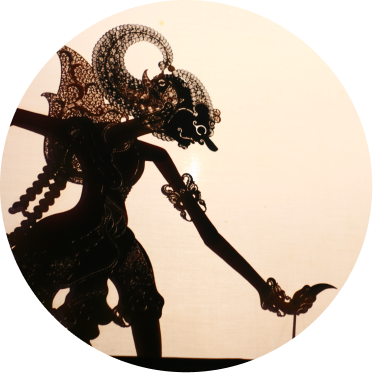
Vietnamese puppetry
Vietnam is one of the only countries that developed and continues to maintain a tradition of water puppetry. These unique shows see wooden puppets appearing to walk on water, with puppeteers controlling them with submerged rods. This tradition started around 700 years ago and was first adopted as entertainment when flooded rice fields meant people couldn’t farm or work.

Philippines puppetry
The Philippines was very much a late adopter of puppetry, with puppetry not seen in the country until some years into Spanish colonization. By the time of the Philippine revolution in the late 1800s, the country had a rich puppetry culture. Throughout the last 150 years, the country has seen multiple puppetry forms evolve and become famous.
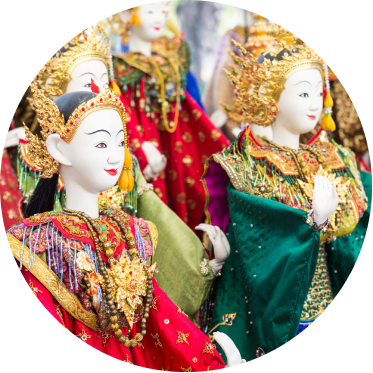
Myanmar puppetry
Myanmar is another unique case when it comes to puppetry, as very little has changed since it was first introduced to the country in the late 1700s. In fact, the same characters introduced by U Thaw, the country’s Minister for Royal Entertainment at the time, remain in use today!
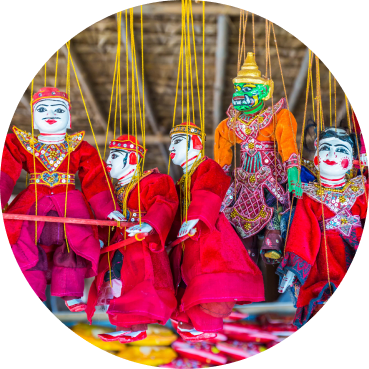
Many forms of puppetry can be found in Japanese theater today, with influences from across Asia as well as the rest of the world. However, the best known and traditional form of Japanese puppetry is bunraku.
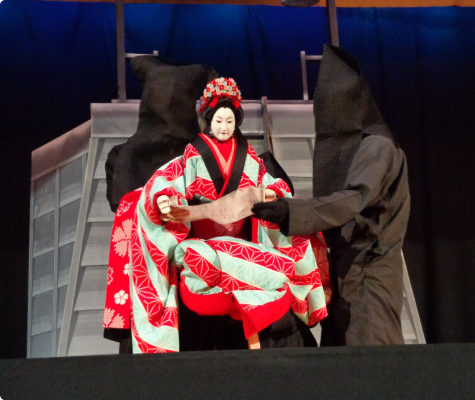
Bunraku first emerged from religious practices, specifically, temple rites carried out by followers of the Shinto religion.
While early forms of bunraku were relatively crude, bunraku productions would evolve to be highly sophisticated and thoughtful over the years, no matter their theme. Such was the popularity of bunraku that in the early 1700s, Chikamatsu Monzaemon, who is basically the Japanese equivalent of Shakespeare, even quit writing kabuki dance dramas to write bunraku puppetry plays exclusively!
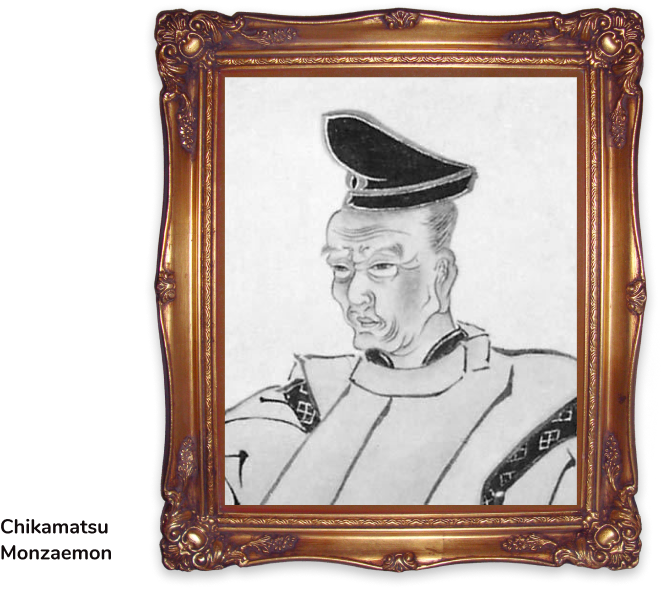
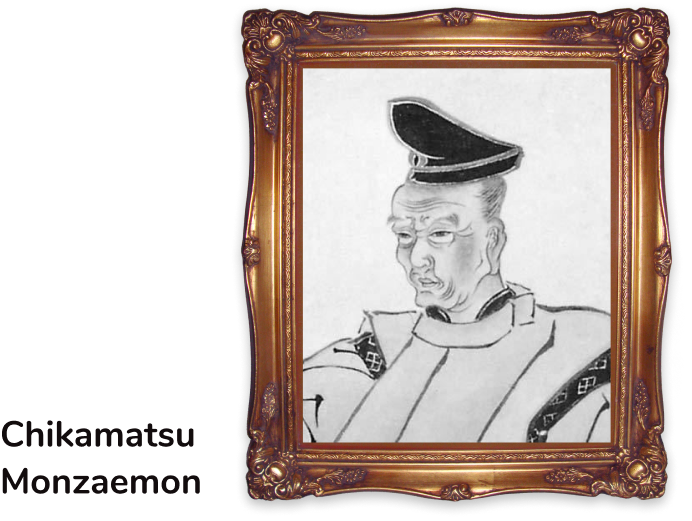
Bunraku remains popular today. The practice has become even more diverse thanks to varying interpretations of the form and the sheer number of practitioners.
In Japan today, bunraku performers,
companies, and puppet makers are
designated “Living National Treasures,”
such is their importance to Japanese society
and culture.

Korean puppetry takes much of its inspiration from China, with kkoktugakshi nori puppet plays emerging during the 18th century as a native Korean type of play. However, Korea’s theatrical puppetry traditions are believed to stretch back at least 1,000 years.
Puppetry has long been popular in India, with puppetry forms from across the world found in the country. However, it is common to find puppetry styles that have been adopted from elsewhere before being given an Indian makeover.
Many puppetry forms have only been introduced to India during the last century. Still, they quickly became part of the national consciousness. Such is India’s vast size and scale that, as well as being a national tradition, puppetry traditions can differ from state to state across the country.
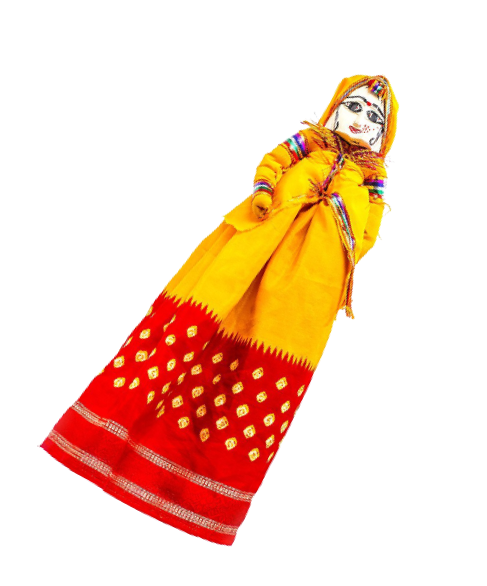
String puppetry is the most common and popular type of puppetry across India. It is also a fantastic example of how different forms of puppetry exist across various regions.
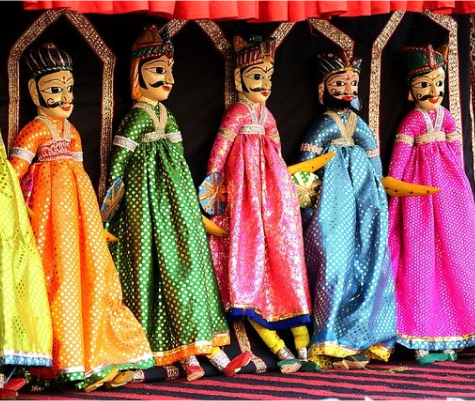
Marionette puppetry is thought to have been one of the earliest forms of puppetry found in India. It remains popular today in Karnataka, Orissa, Rajasthan, and Tamil Nadu.
Within each state, string puppetry has its own local name and traditions.
Rajasthan
There is a tradition of puppets being brightly
dressed.
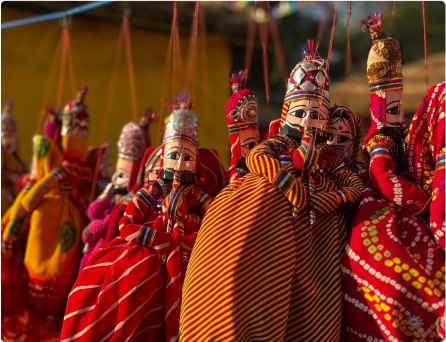
Tamil Nadu
In Tamil Nadu, traditional marionette string
puppetry is combined with rod puppetry.
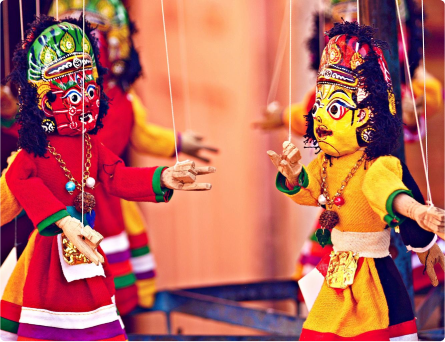
Shadow puppetry is another form of theater that is found across India in several distinct styles. While wooden puppets in the most traditional sense remain heavily and most commonly used, puppet makers in some states have produced leather puppets for much of the last century.
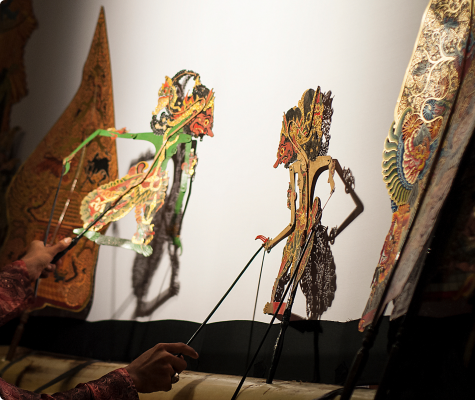
One notable feature of Indian shadow puppets is how easy it is to follow performance and know how important each puppet or character is.
The more important they are in a social context, the bigger they are. If you ever see an Indian shadow puppetry performance, and it isn’t clear who’s who, you can safely assume the giant puppet is the king!
Rod puppetry maintains a tradition of using wooden puppets and remains popular in the West Bengal and Orissa regions.
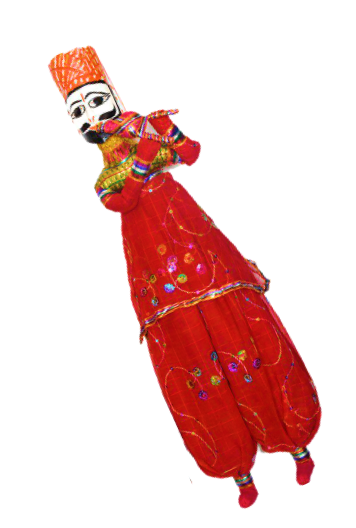
Glove puppetry remains hugely popular in India, mainly because it is accessible to anyone who wants to put on a show, thanks to the affordability of creating a glove puppet. Anyone can easily produce glove puppets from papier mache, wood, or pieces of cloth.
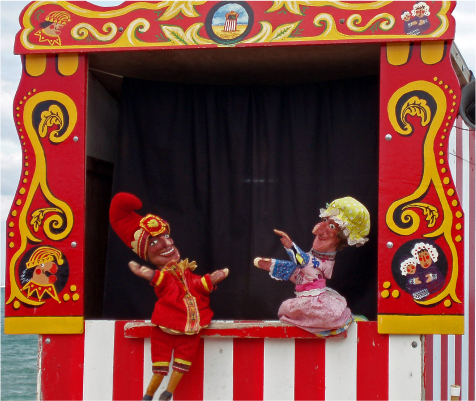
While they’re easy to control, India’s best glove puppeteers have mastered manipulating their hands over many years to get puppets to perform a range of movements and positions.
In some locations across India, glove puppet shows consist of just one puppet, with a puppeteer playing an instrument with their spare hand to present simple stories.
Islamic culture was and remains a massive influence over Middle Eastern puppetry. However, as the famed “cradle of civilization,” Middle Eastern puppetry also has flavors taken from Ancient Egypt and Ancient Greece, as well as from China via Turkish peoples moving across the central Asian nations.
However, puppetry was popular in the regions that are today Iran and Iraq at least 500 years before this, with glove and string puppets widely found. However, it wasn’t until around the 18th century that a specific Middle Eastern style of puppetry would develop, as influences from all the regions nations reached and were accepted in the other.
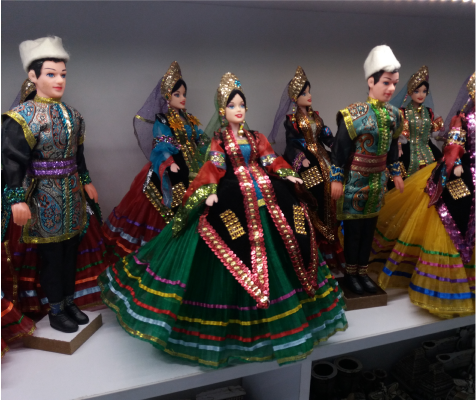
This eventually led to the development of traditional puppet shows in Iran that would be performed in coffee houses, usually by two people, a storyteller or musician and the puppeteer.
The history of puppetry in Europe
While theater as a whole in Europe evolved individually across nations, the evolution of puppetry in the continent occurred in a far more connected manner.
Ancient Greece and Rome were highly
influential, as were the commedia dell'arte
plays that emerged in Italy during the 16th
century and quickly spread across Europe.
However, it didn’t take long for individual nations and regions of Europe to start developing their own takes on puppetry across various genres.
Let’s learn more about how puppetry evolved across Europe.
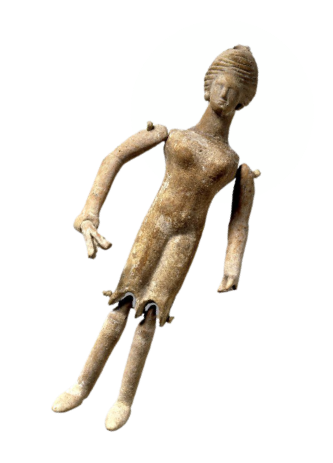
While there are very few surviving examples of puppetry from Ancient Greece and Rome, we know from some legendary playwrights and philosophers’ writings that puppetry was likely a part of society from at least the 5th century BC, and in all probability, far earlier.

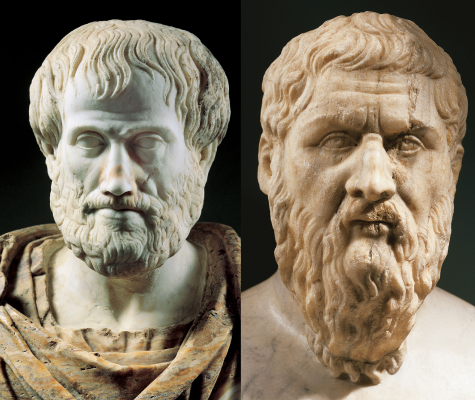
Both Aristotle and Plato referred to puppetry in their writing.
At the same time, two of Homer’s most famous plays, The Iliad and The Odyssey, are known to have been performed using puppets.
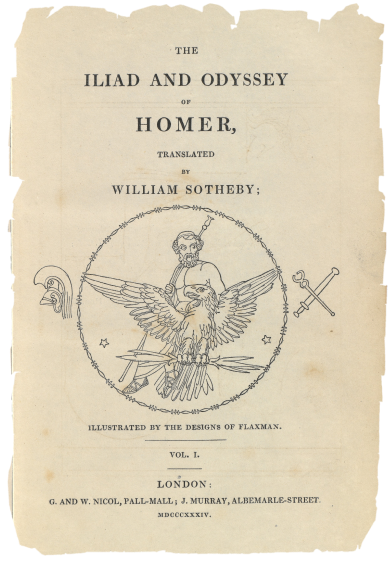
In Greece, it’s likely that puppets were first used as a storytelling device in the years before writers began performing their own productions and actors were eventually introduced.
Beyond this, little is known about puppetry in Ancient Rome and throughout the Roman Empire era.
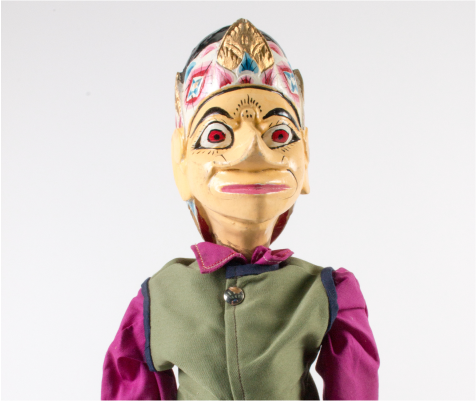
However, in both Rome and Greece, small puppets were found in children’s tombs.
However, historians believe these were probably toys and don’t necessarily mean puppetry flourished during this era to a considerable extent.
It is well established that religion played a significant part in the evolution of theater across Europe. The same is true of puppetry.
It’s even thought the term marionette was
derived from Virgin Mary figurines –
marionette translates literally as “Mary doll.”
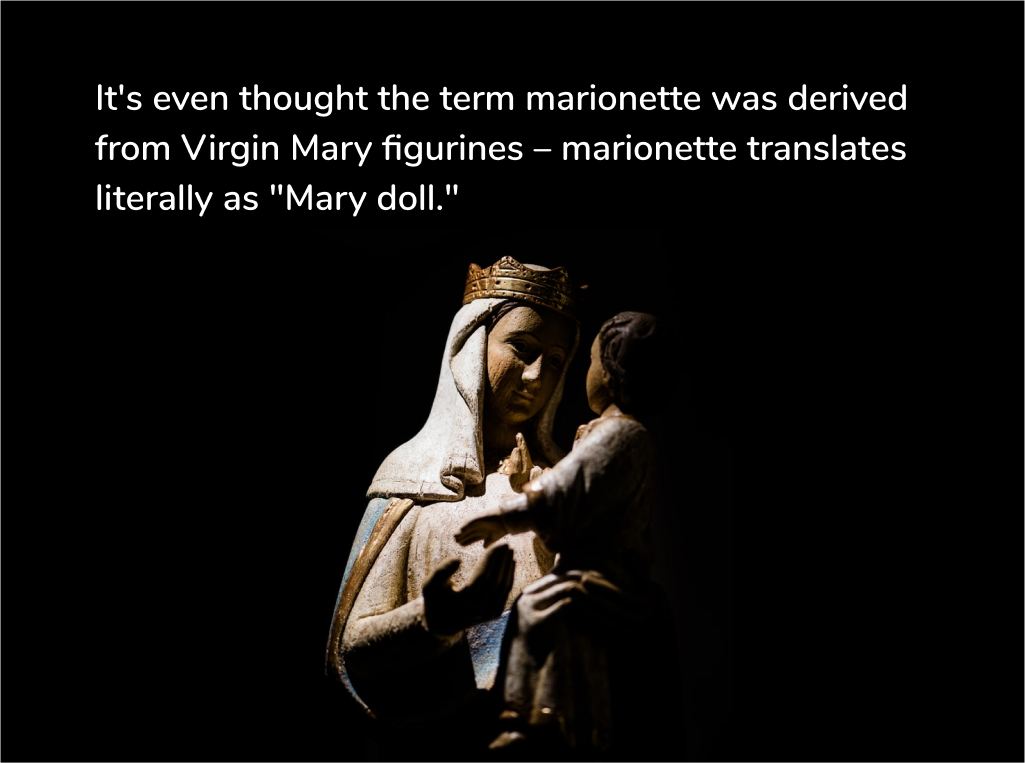
Initially, puppetry in Italy consisted of church groups making marionette puppets and using them to produce plays about morality or containing other religious messaging.
Eventually, these productions would develop as people sought to introduce other elements into plays, with comedy being particularly popular. However, this eventually led to the church banning puppetry altogether!
Thankfully, this didn’t discourage those who had started to pursue puppetry as a passion. Puppeteers would quickly begin to come up with ideas outside of the platform provided by churches.
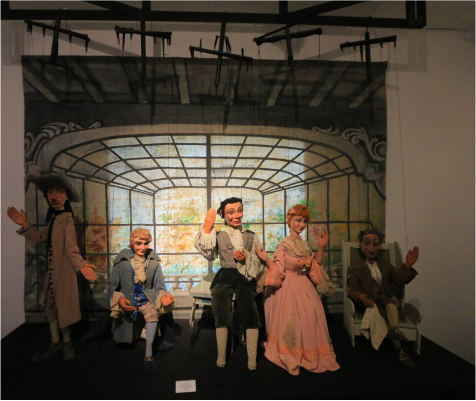
The ban led to puppet shows becoming even more comedic and slapstick. At the same time, risqué and sexually charged themes also quickly became familiar.
Many puppeteers and companies even went so far as to set up stages and perform these outside of churches. As you can imagine, this was hugely controversial, especially when they’d attract the attention of worshippers coming in and out of the church!
As puppetry and theater, in general, evolved in Italy throughout the 18th and 19th centuries, marionette puppetry would come to be regarded as “for the aristocracy.” At the same time, lower social classes would only be able to afford to attend rod puppetry productions.

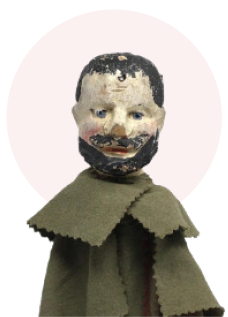
In France, puppetry has always been seen as something targeted towards children. Still, adults have long appreciated it, too, primarily due to the comedic content of puppet shows.
Uniquely, puppetry in France
moved into the mainstream thanks
to Laurent Mourguet, a puppeteer
who created the iconic puppet
show character, Guignol.
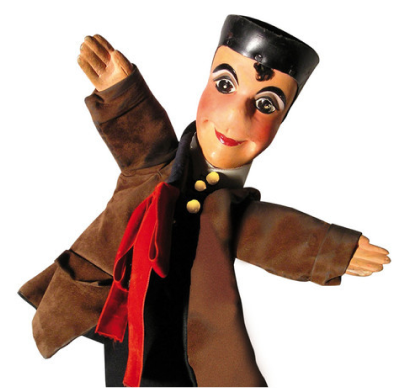
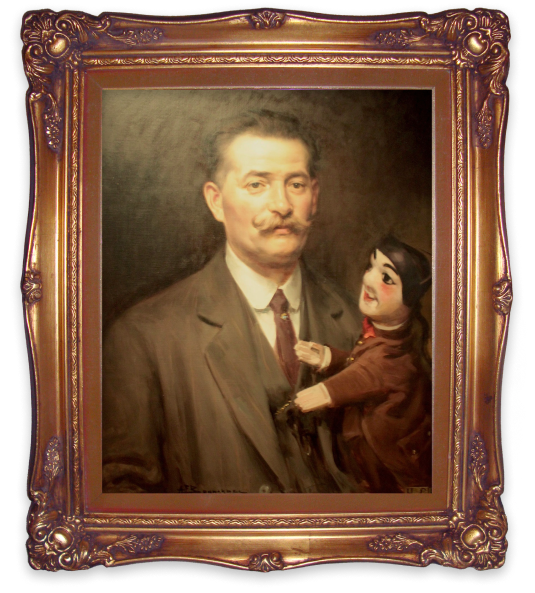
During the French revolution, Mourguet became a dentist and used puppet shows to attract patients and distract them while he was pulling out their teeth. I guess if you couldn’t have pain relief, laughter is the next best thing!
In the early 19th century, Mourguet gave up dentistry and became a full-time puppeteer, both writing shows and putting in improvisational performances in Lyon, where he was based.

Initially inspired by Italian commedia dell’arte, Mourguet would quickly develop his own cast of characters based on the people of Lyon.
Puppetry shows inspired by the works of Mourguet continue to be popular in France today.
Punch and Judy is one of the most famous
puppet shows in the world.
While it’s still most commonly associated with British coastal locations, the foundations of these shows can be found everywhere puppetry remains a popular type of performance.
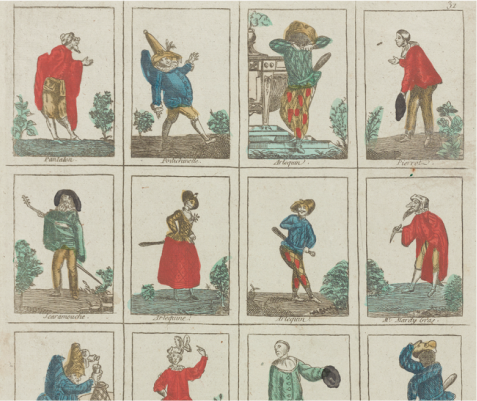
These shows were themselves inspired by Italian commedia dell’arte.
In Great Britain, before becoming symbols of coastal vacations, traveling companies, typically consisting of two or three puppeteers, would typically perform Punch and Judy shows.
In the early 20th century, Great Britain would see a resurgence in puppetry as puppetry and theater guilds were set up to provide various shows from permanent venues.
Alongside the United States, which we’ll learn more about later, throughout the 20th-century, puppetry would become an integral part of several TV productions in the UK.
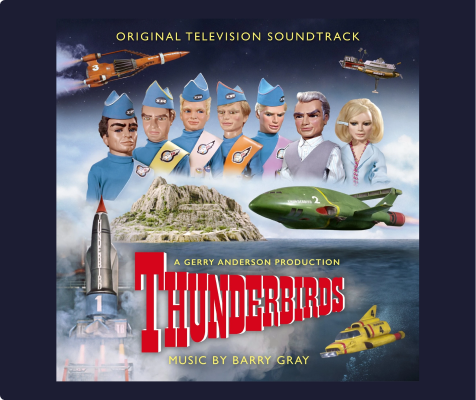
The iconic Thunderbirds, which combined traditional puppetry with pre-written dialogue and storytelling, is perhaps the best known, and remains hugely popular and retains a cult-like status.
While puppetry as a standalone theatrical discipline remains popular across Great Britain, predominantly in London, it is also used in many general theater shows, especially when productions are heavily reliant on visuals to support the participating actors’ performances.
Germany and Austria have their own version of Punch and Judy. Like puppetry in France and Great Britain, puppetry traditions in these nations were built heavily on Italian commedia dell’arte.
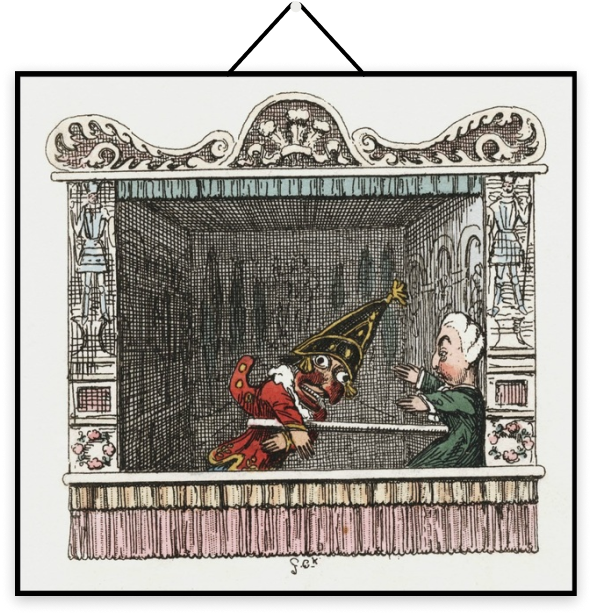
During the 18th century, some of the most
popular entertainment forms in these countries
were puppet shows set to opera.
During the 19th century, there were many theaters in Germany where patrons could exclusively enjoy hours-long puppet shows, with many of them providing cutting, borderline savage, social commentaries.
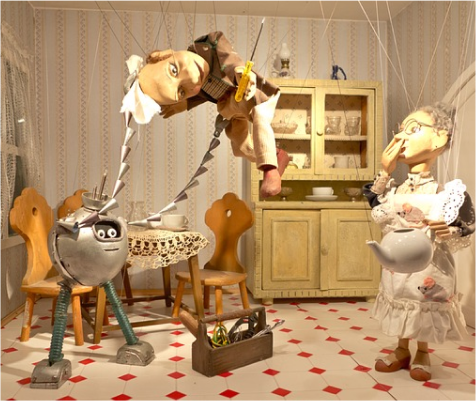
In both Germany and Austria, and other countries throughout Eastern Europe, there remains a strong tradition of puppetry, and particular marionette shows, being set to opera, with productions routinely selling out night after night.
As well as showing purpose-written puppetry operas, theaters in these countries are also famous for adopting popular existing plays and operas to be performed by puppeteers.
The history of puppetry in Mexico & the United States
Puppetry has a rich history across Mexico and the United States. It is known that puppetry was in use in Mexico at least as early as 1,500 years ago, with puppets predominantly used in funeral ceremonies before becoming popular in festivals and ceremonial days.
There is also evidence that puppets had a
significant role in Native American traditions for
various occasions and events.
Across the United States as a whole, puppetry was somewhat unique. Despite there being heavy influence from Europe, distinct American puppetry styles developed from around the 16th century onwards.


At the time, these were seen as a fantastic means of helping the population escape the country’s economic troubles, if only for a short time.
Following the Great Depression and the growth of television in the United States, puppetry would quickly become mainstream. What’s more, the United States would become a pioneering country for the use of puppetry in TV, with marionette puppets like Howdy Doody helping to revitalize the use of such puppets in theater, as well as puppetry in general.
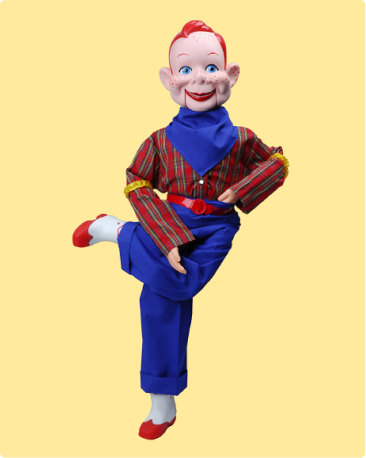
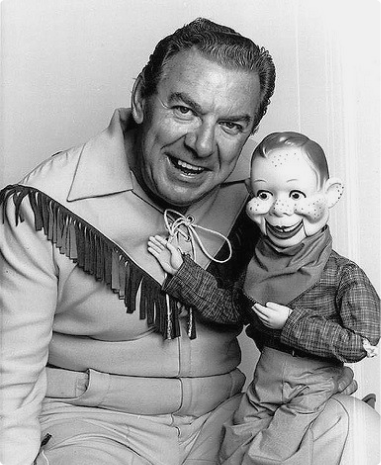
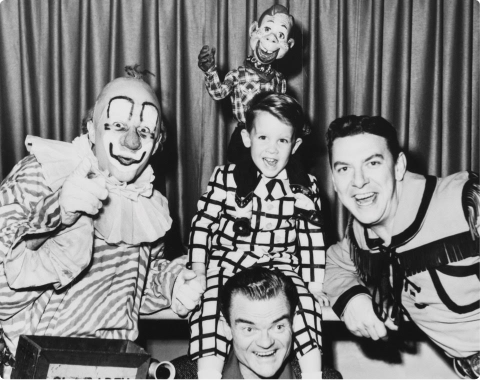
Howdy
Doody

Throughout the 20th century, further advancements would be seen, with the 1960s bringing the first live-action shows featuring puppets.
At the same time, Jim Henson’s Muppets,
although created in the 1950s, would
become world-famous during the 60s.

Advancements in the use of puppetry would also be seen in cinema, with the character of Yoda in the Star Wars franchise one of the earliest uses of puppets in movie production.





The history of puppetry in Australia
It is known that puppets played a role in Aboriginal storytelling traditions. These traditions stretch back thousands of years and potentially even pre-date the earliest known recordings of puppetry from Ancient Greece and Egypt.
In a contemporary sense, puppetry didn’t really become part of Australian theater or other means of entertainment until around the 1960s, when marionette productions became popular in the country. Touring productions of puppet shows led to the establishment of theater companies specializing in puppetry across the next two decades.
Rod Hull's Emu became one of the
most famous puppets in the world
during the 1960s.
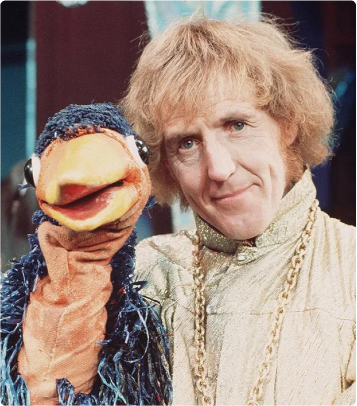
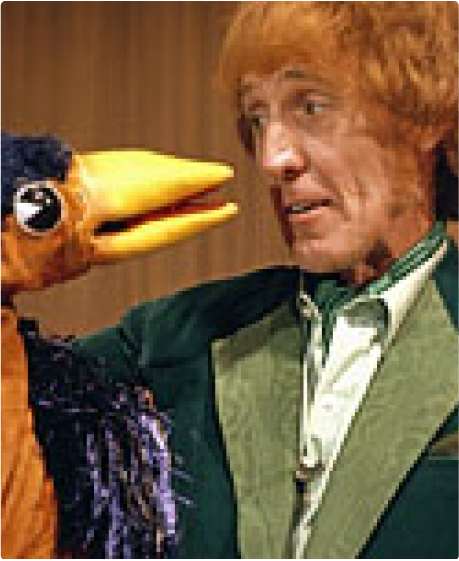
To this day, a puppetry festival is held in Melbourne during the winter months.
Australia is perhaps the most prominent country where puppetry remains a significant part of the theater landscape, rather than being available as a niche if it takes your interest.
Puppetry in the
21st century
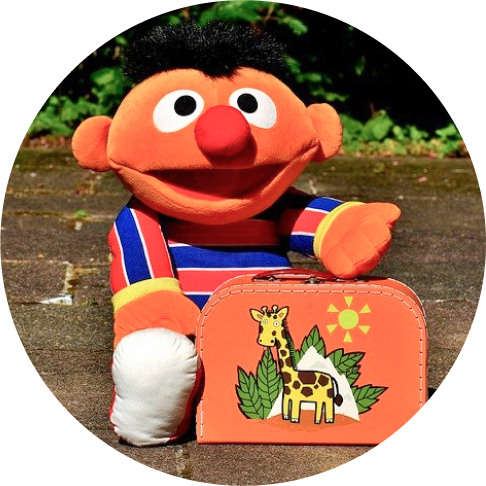
Beginning at the turn of the 20th century, a cultural mindset arose in Europe and the United States in which puppets began to be used experimentally, aimed solely at adult audiences.
In productions spurred by this movement, a
performance might combine actors and puppets
or use actors as if they were puppets.
Some productions also combined puppetry with mask theater, juxtaposing masked performers, puppets, and other objects inside a minimalist visual world onstage.
Today, an event described as puppet
theater may not include rod puppets,
marionettes, or hand puppets, depending
on the intended message and the audience.
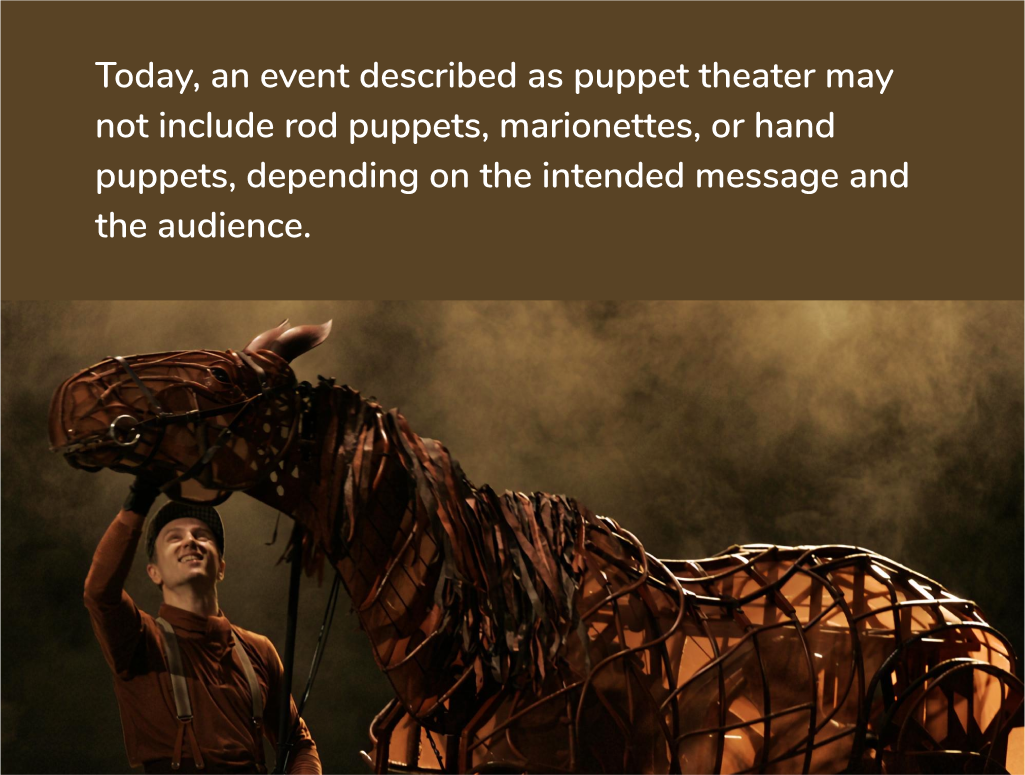
Puppets also continue to be used in many instances to appeal to children and families, whether on television or in live performances. The use of puppetry has even evolved to the point where we now have actors dressed as puppets in movies and popular TV shows. Technology also continues to aid the use of puppetry, making them fit seamlessly into productions while looking more realistic and at one with their surroundings than ever before.

Further playing into this, features like digital puppetry continue to evolve and bring ever more possibilities to producers of film and TV content.
In general, puppetry is still viewed as an ideal vehicle for presenting moral messages about childhood concepts such as bullying. Puppets are also used in play therapy as a safe way for traumatized children to explore their fears. Whether the focus is on adult or child enjoyment of puppets, there are regional puppet guilds and societies through the United States, Europe, and other parts of the world. Several national and international museums also exist to celebrate the history of puppets.

Puppetry
Resources
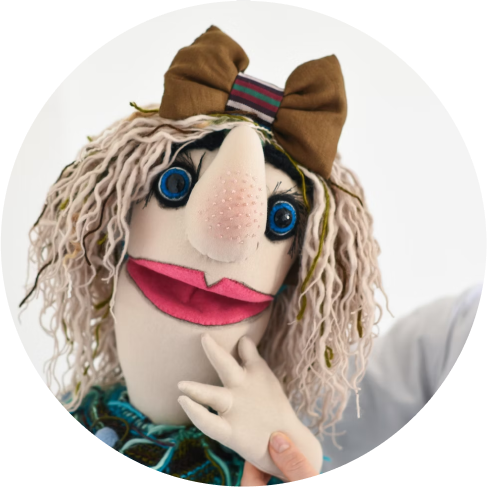
- The Ballard Institute and Museum of Puppetry
This site, based at the University of Connecticut, is Connecticut’s state museum for puppetry. It is named after Frank Ballard, a Dramatic Arts professor. - International Puppetry Virtual Museum
Take a virtual tour through the collections of the International Puppetry Museum in Pasadena, California. - Glove Puppetry
This page offers photos and information about the folk art of glove puppetry as it is practiced in Taiwan. - Puppet Building Information
Puppet maker Nick Barone offers detailed advice on the materials and mechanics of puppet construction. - The Doll Theater
Online gallery of bunraku puppets from the collection of the Donald Sheehan Gallery at Whitman College in Walla Walla, Washington. - The Bauhaus, Puppets and Play
A brief description of the law passed in 1975 to regulate warranties on consumer products. - The Art of Puppetry
A puppet artist’s description of puppetry, including its history and the different major types of puppets. - Paul McPharlin Puppetry Collection
A description of a significant collection of American theatrical puppets housed at the Detroit Institute of Arts. - Puppets of the World Museum: Virtual Visit
Explore the collections of antique puppets dating from the 17th century with this virtual tour of an international puppet museum in Lyon. - Items from the Douglas Hayward Puppet Archives
Explore the collections of antique puppets dating from the 17th century with this virtual tour of an international puppet museum in Lyon. - Marionettes
This page by the Victoria and Albert Museum describes the history and function of marionettes, with images of examples in the museum’s collection. - Overview of Bunraku Puppet Theater
A history of Japanese bunraku puppetry for adult audiences. - A Brief Introduction of Chinese Puppetry
A description of the place of puppetry in Chinese history, dating to the 16th century BCE. - History of the Puppet House Theater
This page describes the historical background of this puppetry-based performing arts center in Stony Creek, Connecticut, which began life as a silent movie theater in 1903. - The National Puppetry Archive Database
View items from the collections of the UK’s National Puppetry Archive by using its digital database of images and information.
- What are the different types of puppets?
- When were the first puppets used?
- What is Bunraku?
- What can puppets do for kids?
- How has puppetry evolved?
- Did they use puppets in ancient Greece?
- What is shadow puppetry?
- Who is Chikanatsu Manzaemon?
- What are the types of puppetry in India?
- What are Punch and Judy shows?
- What are some puppetry resources?
- When did puppetry start in the U.S.?
- Accessories For Media Room
- Best Movie Chair For Homes
- Amazing Couches
- Entertainment Chairs
- Chaise Style Theater Seating
- Love Seat Sofa
- Sofa Price
- Living Room Sofa Sets
- Sofa Couch
- Theater Seating For Business
- Leather Theater Seating Recliner
- Sale Sectional
- Theater Seating Style
- Comfy Sectional
- 2 Seater Reclining
- Leather Loveseat Recliner Electric
- Home Theater Media Room Seating
- Best Loveseat Sofa
- Best Sofa Theater Recliners
- Theatre Furniture Near Me
- Ashley Furniture Recliners Deal
- Best Buy Theatre Seats
- Octane Seating Furniture
- Sofas Brands
- Black Leather Sectional Couch
- Heated Couches
- Blue Reclining Loveseat
- Center Console Seating
- Most Comfortable Sofa Brands
- Home Theater Seat Power Recline
- Brown Leather Couch For Sale
- Home Theatre Riser
- Best Leather Power Reclining Sofa
- Who Makes Recliners
- Octane Media Furniture
- Movie Theater Concessions
- Leather Electric Recliner Sofas
- Led Couch Set
- What Is A Power Headrest
- Recliners With Heated Seats
- Couch Grey
- Fabric Sofas
- Electric Recliner Loveseats
- Genuine Leather Sofa
- Couch Recliner
- Huge Sofa
- Small Sofas
- Leather Couch And Loveseat Recliner
- Contemporary Sofa
- 3 Theater Seats
- Tall Man Recliner Reviews
- Cuddle Chair Loveseat
- Faux Leather Electric Theater Seats
- Stadium Theatre Seats For Sale
- Thin Recliner Chair
- Reclining Oversized Chair
- Theater Recliner Seat
- Modern Leather Sectional With Recliner
- Over Sized Sectionals
- Stuff For Man Caves
- Leather Theatre Couches

